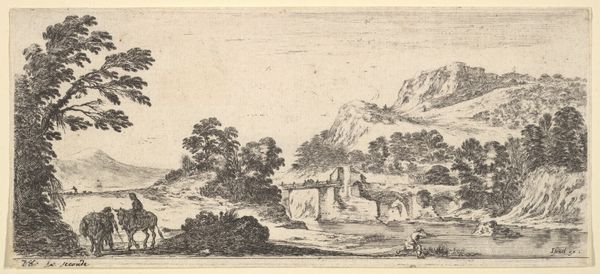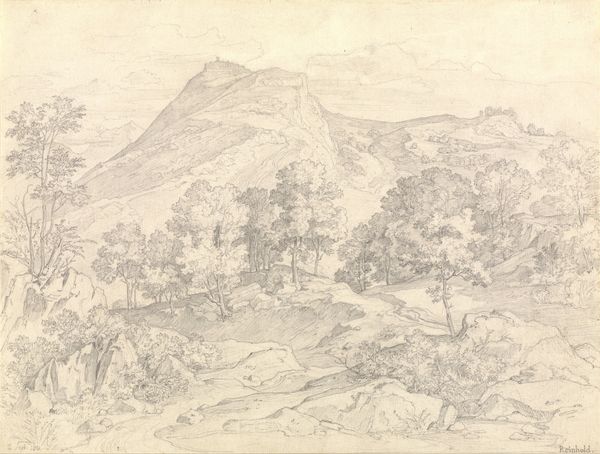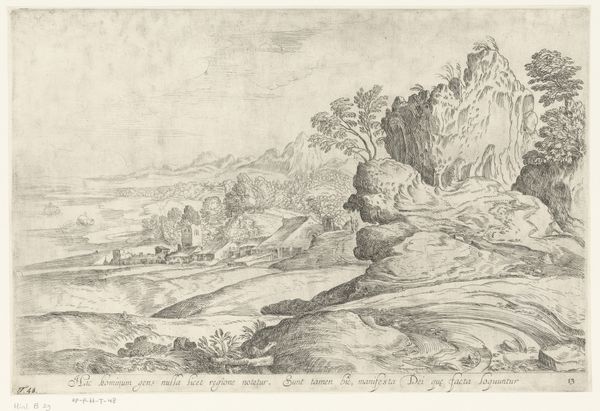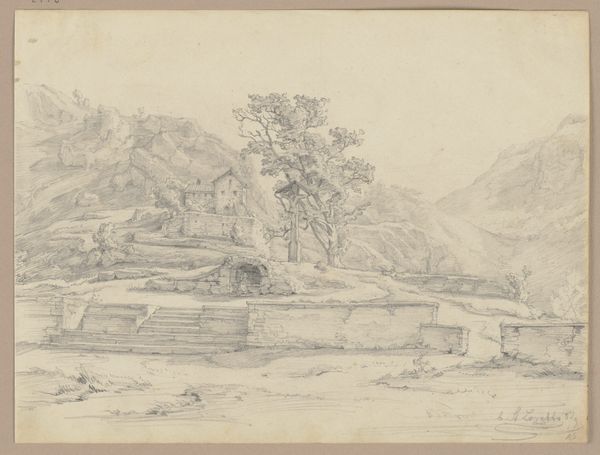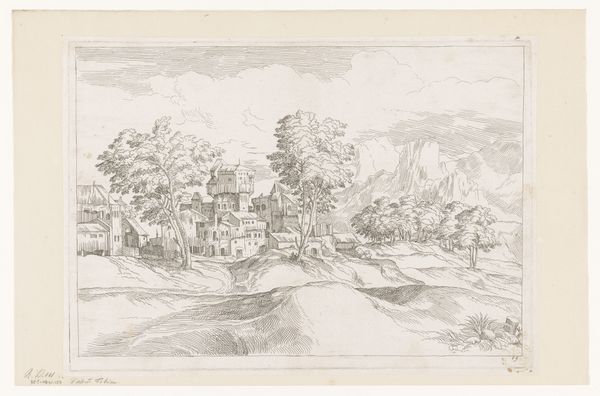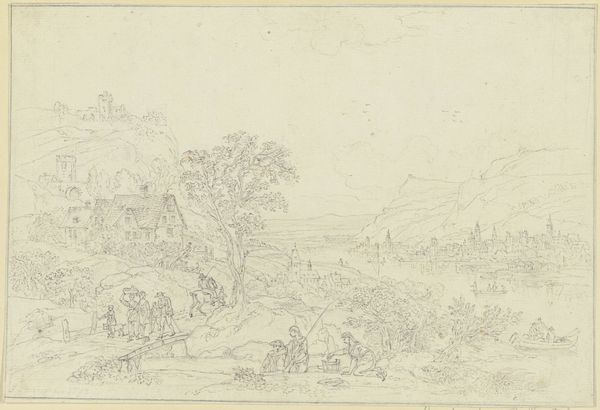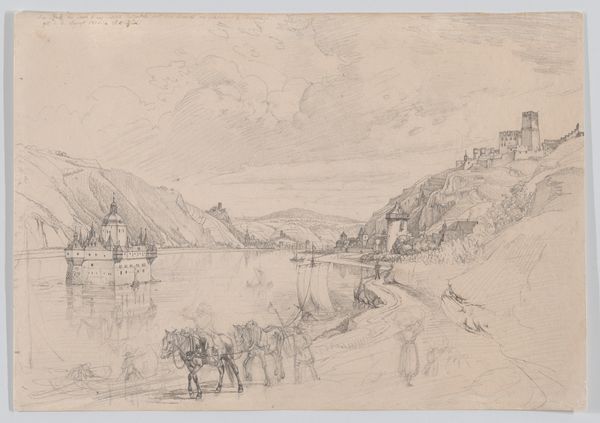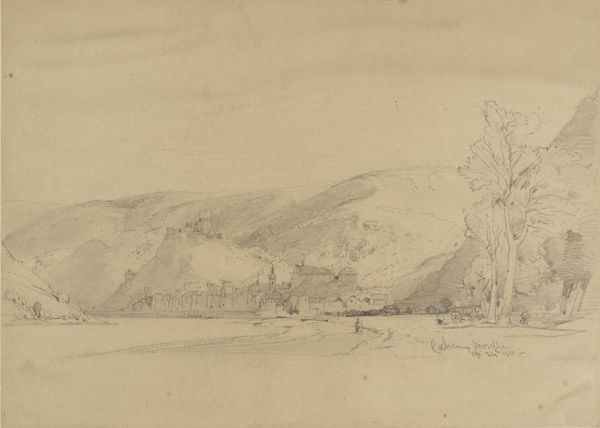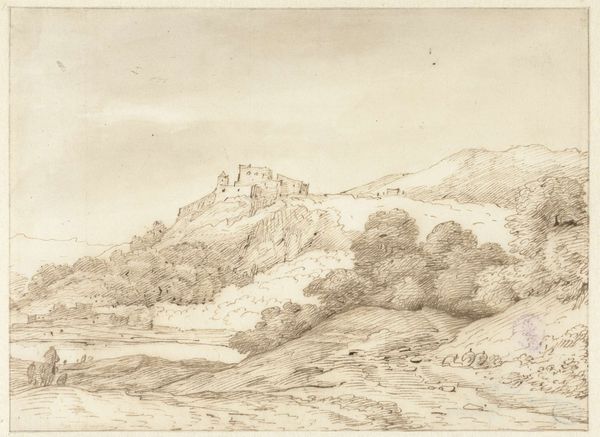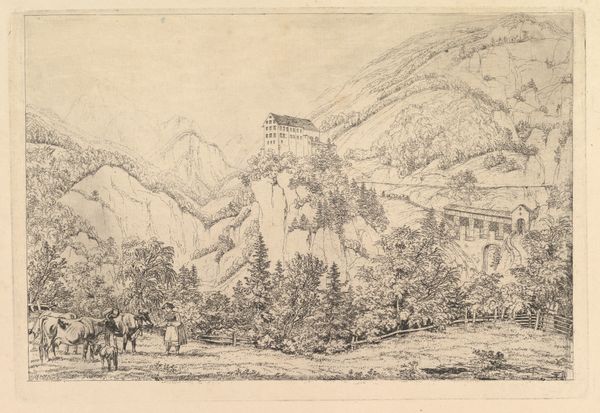
drawing, pencil
#
drawing
#
landscape
#
romanticism
#
pencil
#
realism
Dimensions: 6 9/16 x 8 3/8 in. (16.67 x 21.27 cm)
Copyright: Public Domain
Editor: So, this is Théodore Rousseau's "Village in a Mountainous Landscape," a pencil drawing from 1825. It feels quite detailed despite the limited medium; I’m particularly drawn to how the textures create a sense of depth. What strikes you most about it? Curator: For me, it's the tension between the supposed realism and the undeniable labor involved in its creation. Notice the deliberate hatching and cross-hatching – those aren't merely mimicking nature. They're revealing a process, a system of production. This wasn’t quickly sketched en plein air. How might the material limitations of pencil, compared to paint, shaped his engagement with the landscape, and the experience of producing art at this time? Editor: That's interesting. I hadn't considered how the choice of pencil emphasizes the production. Does the romantic style connect with ideas about labor at the time? Curator: Absolutely. Romanticism often idealizes the rural, but it can also erase the actual work of the peasantry. Does this drawing glorify a peasant life, or show labour? How can the drawing only imply so many human aspects of production and social activity in this rural landscape? Editor: I see what you mean. It is picturesque, but there aren't many clear signs of active labor, and the scale kind of dwarfs any presence humans have in the scene. Curator: Precisely. What story is told when you choose not to picture that toil? What other meanings are being prioritised here? How is Rousseau playing with both representing and obscuring the realities of 19th-century rural life through the use of a relatively available and widely-used medium? Editor: That makes me look at the work differently. Thank you! Curator: Indeed! Considering artistic choices in the context of their materials can unlock hidden cultural narratives.
Comments
No comments
Be the first to comment and join the conversation on the ultimate creative platform.
